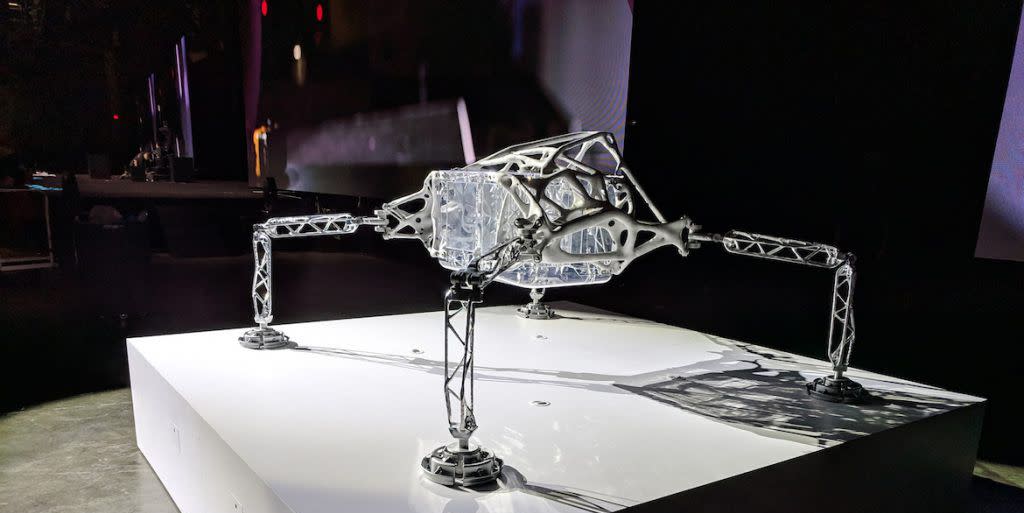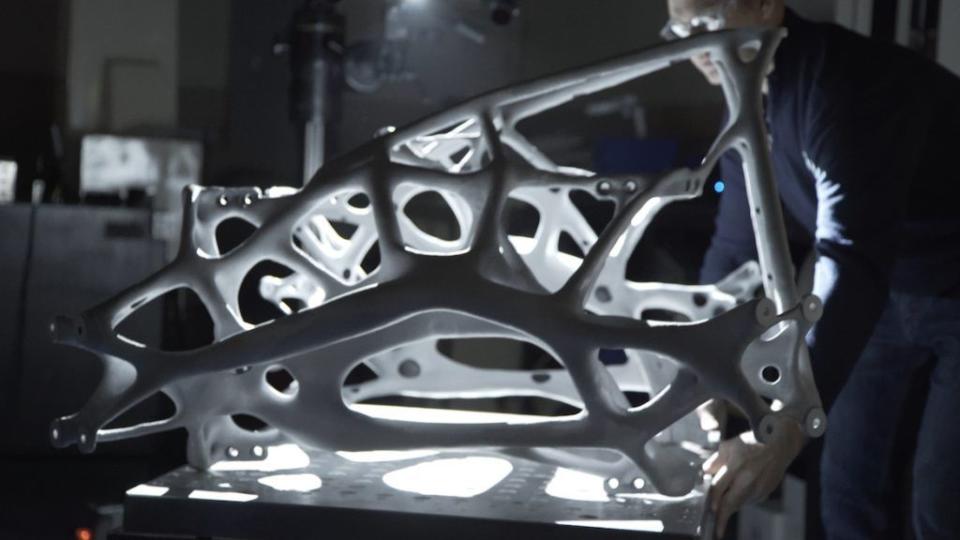Here's AI's Best Guess at a 3D Printed Lander for Saturn and Jupiter's Moons

When it comes to exploring the planets and other bodies of our solar system by landing on them, there's not a whole lot that works twice. Planets and moons throughout the solar system have different surfaces, different gravity, and all sorts of other specific and challenging features like lakes of strange liquids or spears of ice. In exploring the possibilities, NASA has partnered with 3D design software company Autodesk to build prototype versions of potential landers for the moons of Saturn and Jupiter.
“They were clear that they weren’t interested in incremental gains," says Mark Davis, senior director of industry research at Autodesk, speaking about the collaboration in a press statement. The model lander Autodesk produced and displayed at its sponsored conference in Las Vegas might be "the most complicated structure ever created using generative design," according to Davis.

On some levels, the tech industry and the spaceflight industry have fundamentally difference attitudes towards experimentation. While tech company might be able to afford to fail and learn from its mistakes going forward, there's rarely a chance to fix a mistake once it's been sent beyond the Earth's atmosphere. NASA has expressed a serious interest in 3D printing recently-it's also run a competition exploring 3D printed housing structures on Mars.
For the potential lander, Autodesk used machine learning to do what 3D printing can do best-find waste and eliminate it, with a focus on using generative design for internal structures within a lander that hold scientific instruments as well as the external structure that connect the lander's legs to the payload.

Moons like Enceladus and Europa have long been on the wishlists of eager astronomers looking for exploration. Research from this year has suggested that the icy Enceladus in particular has strong potential for life, with microorganisms clinging to the surface of its sea floor.
Given how different a mission to Enceladus would look compared to a mission to Mars, it only makes sense that the lander would be different as well.
Source: The Verge
('You Might Also Like',)

